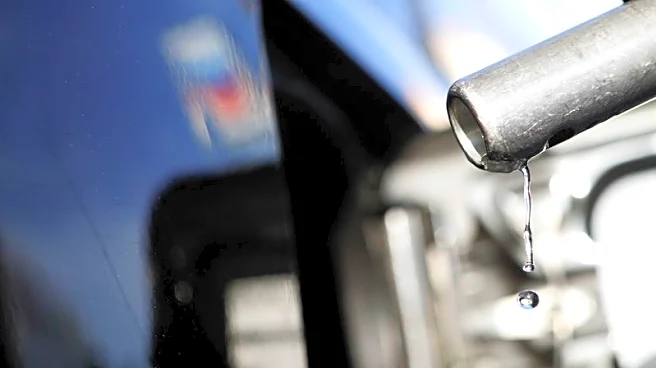What's Happening?
California's legislature has approved the sale of E15, a gasoline blend containing 15% ethanol, marking a significant shift in the state's energy and agricultural sectors. The passage of Assembly Bill 30 (AB 30) by the California State Senate and Assembly awaits Governor Gavin Newsom's signature to become law. This development is expected to create substantial economic opportunities for biofuel producers and corn farmers, while also advancing environmental goals. E15 is compatible with 96% of vehicles on the road and could expand ethanol demand by up to 700 million gallons annually in California. The legalization of E15 is supported by government incentives, including the 45Z Clean Fuel Production Tax Credit and the Small Agri-Biodiesel Producer Tax Credit, which encourage sustainable practices among ethanol producers.
Why It's Important?
The approval of E15 in California represents a strategic inflection point for the renewable energy and agriculture sectors. For biofuel producers, the combination of regulatory clarity, federal tax credits, and a growing domestic market offers a compelling case for investment. Corn farmers stand to benefit from a record harvest and a new outlet for surplus production, potentially stabilizing prices and enhancing profitability. However, the environmental trade-offs, particularly in corn-producing regions, demand careful consideration. Increased corn cultivation could lead to nitrogen-based fertilizer runoff, contributing to water contamination and eutrophication. The success of E15 will depend on addressing these sustainability challenges.
What's Next?
The California Air Resources Board (CARB) is expected to expedite E15 rulemaking, with the state's 2025-2026 budget allocating $2.3 million for this purpose. However, the rulemaking process could take up to a year to finalize, with potential requirements such as warning labels or infrastructure adjustments. Additionally, California's upcoming climate disclosure laws will require companies to report greenhouse gas emissions and climate-related financial risks starting in 2026. Biofuel producers and corn farmers must prepare for heightened scrutiny on their environmental practices. Collaborative initiatives between biofuel producers, agricultural cooperatives, and environmental groups could mitigate risks while maximizing the benefits of E15 adoption.
Beyond the Headlines
The environmental benefits of E15 must be weighed against the indirect impacts of ethanol production. While E15 emits fewer pollutants than E10, the state's reliance on imported ethanol shifts environmental costs to regions already grappling with agricultural pollution. For instance, Iowa's corn farming practices have been linked to nitrate contamination in drinking water. The long-term trajectory of E15's environmental impact remains uncertain, and continued monitoring is essential to ensure sustainable practices are adopted.













